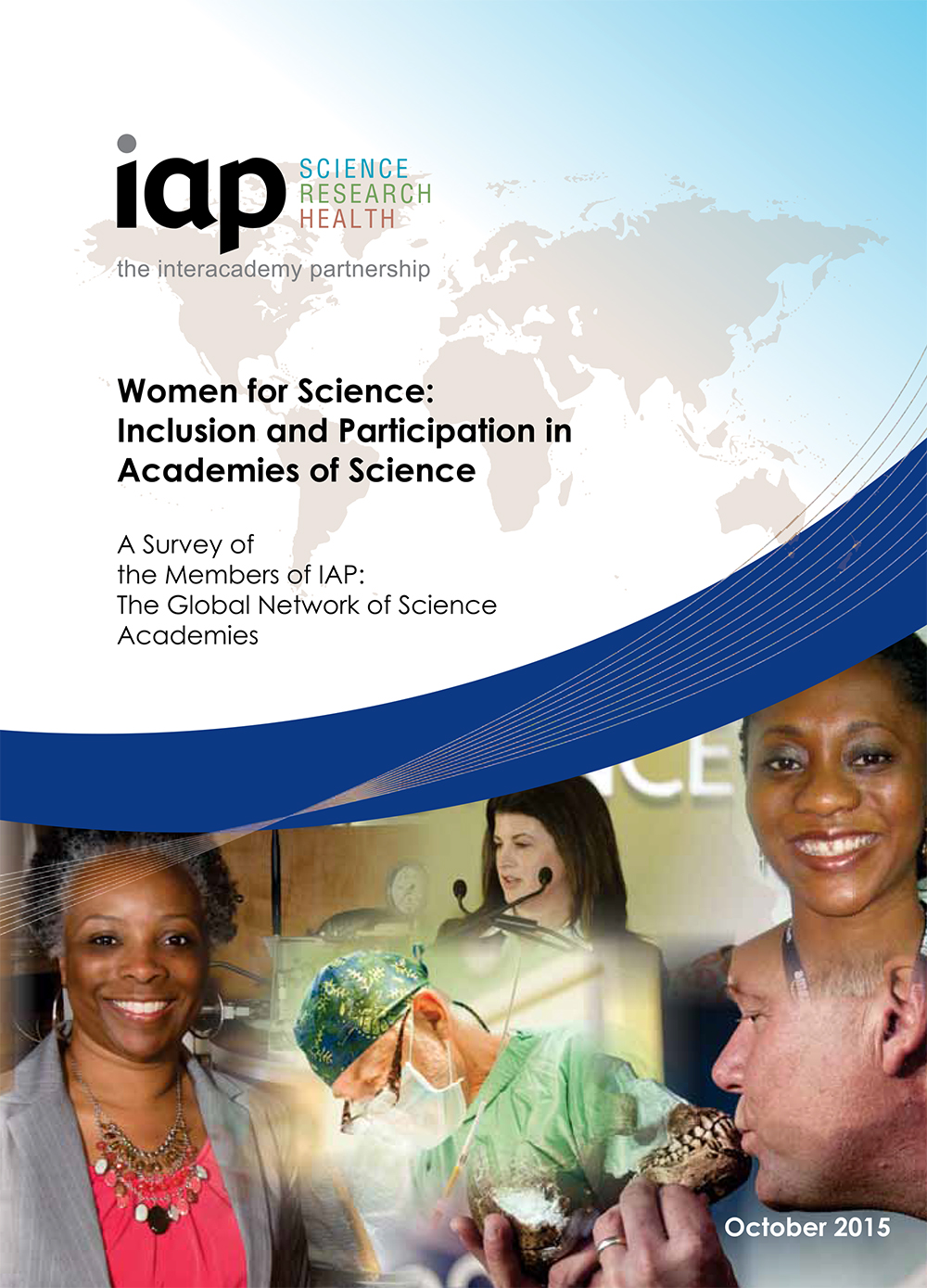 The inclusion and participation of women in science are addressed in a report launched today by the Academy of Science of South Africa, finding that across 69 national science academies women make up just 12% of academy members on average. In 30 of those academies, the share of women members was 10% or less.
The inclusion and participation of women in science are addressed in a report launched today by the Academy of Science of South Africa, finding that across 69 national science academies women make up just 12% of academy members on average. In 30 of those academies, the share of women members was 10% or less.
The report, Women for Science: Inclusion and Participation in Academies of Science was supported by the IAP – The Global Network of Science Academies. It documents the results of two surveys undertaken by the Inter-American Network of Academies of Sciences (IANAS) and the Academy of Science of South Africa (ASSAf) targeting member countries of the IAP. The work was conducted with input from the Organization for Women in Science for the Developing World (OWSD).
As the first comprehensive survey of its kind and representing 63% of national science academies globally, it investigates women’s representation in membership, governance and science academy activities. Among its findings are that the Cuban Academy of Sciences has the largest share of women: 27%. The national science academies of Mexico, Nicaragua, Peru, Uruguay and Honduras are also among the list of the top 10 academies with the largest percentages of women members.
IAP has been promoting the role of women in science for several years. Although great strides have been made in enrolling more women in undergraduate courses, especially in the biological and chemical sciences (success has been more limited in the areas of physics, mathematics and engineering significant challenges remain in ensuring that the best women scientists are able to have fulfilling careers with increasing levels of responsibility, eventually taking up leadership and decision-making positions.
IAP has a close relationship with TWAS, which hosts IAP offices on the campus of the International Centre for Theoretical Physics (ICTP) in Trieste, Italy, and often collaborates with them on their events. TWAS also hosts two other international organizations: IAP, the global network of science academies; and the Interacademy Medical Panel (IAMP) and the Organization for Women in Science for the Developing World (OWSD).
The report was launched at the IAP Conference of Science Advice on 29 March 2016 at 18:00 at the Arabella Hotel, Hermanus, South Africa. A pdf of the full report will be available on ASSAf's website.
This news release has been jointly issued by:
IAP – the global network of science academies
IAP is a global network of the world's science academies. Launched in 1993, its primary goal is to help member academies work together to advise citizens and public officials on the scientific aspects of critical global issues.
IAP is particularly interested in assisting young and small academies achieve these goals and, through the communication links and networks created by IAP activities, all academies will be able to raise both their public profile among citizens and their influence among policymakers.
InterAcademy Partnership
The IAP General Assembly on 2 March will also see the launch of the InterAcademy Partnership. This new umbrella brings together IAP, the InterAcademy Medical Panel and the InterAcademy Council under one cohesive umbrella. Follow them on Twitter.
About Academy of Science of South Africa (ASSAf)
The Academy of Science of South Africa (ASSAf) celebrates its 20th year as official academy of South Africa this year.
ASSAf was inaugurated in May 1996. It was formed in response to the need for an Academy of Science consonant with the dawn of democracy in South Africa: activist in its mission of using science and scholarship for the benefit of society, with a mandate encompassing all scholarly disciplines that use an open-minded and evidence-based approach to build knowledge.
ASSAf thus adopted in its name the term 'science' in the singular as reflecting a common way of enquiring rather than an aggregation of different disciplines. Its Members are elected on the basis of a combination of two principal criteria, academic excellence and significant contributions to society.
The Parliament of South Africa passed the Academy of Science of South Africa Act (Act 67 of 2001), which came into force on 15 May 2002. This made ASSAf the only academy of science in South Africa officially recognised by government and representing the country in the international community of science academies and elsewhere. Here is more on the history of ASSAf. Follow them on Twitter.
Contact:
About Academy of Science of South Africa (ASSAf)
Patricia Scholtz
Communication Manager
Tel: +27 12 349 6618
Cell: +27 82 550 0757
Email: patsy@asssaf.org.za

